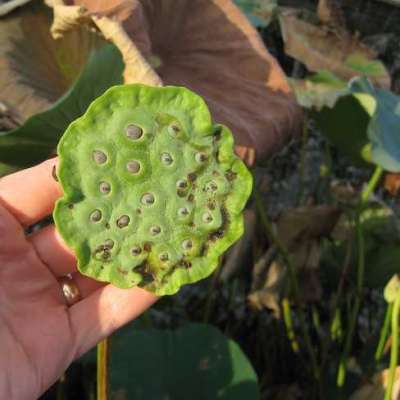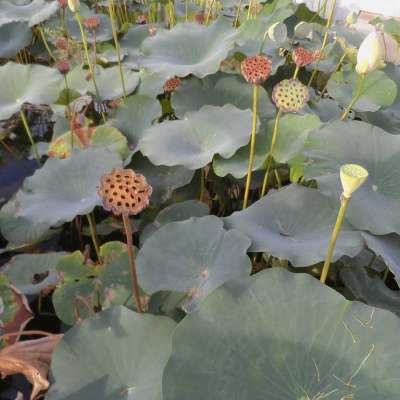Lotus-Wild Edible-from "Foraging Texas" website.
Common in many shallow, still water, lotus are often mistaken for some sort of large water lily. The main differences between lotus and water lilies are lotus "pads" are round & intact whereas water lily pads have a cleft or gap in the pad and so aren't a complete circle. Also, lotus pads grow up to a foot out of the water on strong stalks while lily pads stop growing at the surface of the water. Lotus seedpods look like weird, green showerheads pointing up at the sky while green and then drooping face down towards the water when brown and dry. The tubers are thick, long, segmented and MUCH tastier than water lily tubers!
Lotus nuts were a much-beloved food of Native Americans due to the flavor and high-energy content. After cracking and removal of the small, bitter, green plant embryo the seeds can be eaten raw, roasted, roasted then pounded into flour, or candied. Toasting, boiling, then mushing up the seeds gives a hearty porridge that reminds me of Malt-O-Meal.
Lotus tubers can be somewhat of a challenge to harvest. The tubers grow during the summer at the end of the lotus runners. Follow a pad stem or seedpod stem down to its base runner then follow this runner to its end. These tubers can be eaten raw, roasted, or candied by boiling in a concentrated sugar solution. Mix a little ginger in with the lotus root when you candy it for a real treat!

